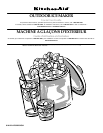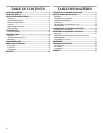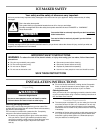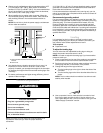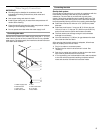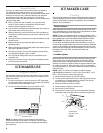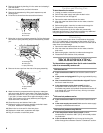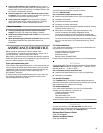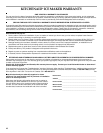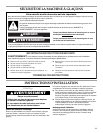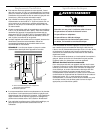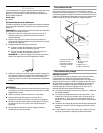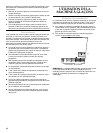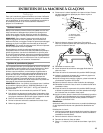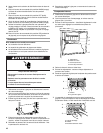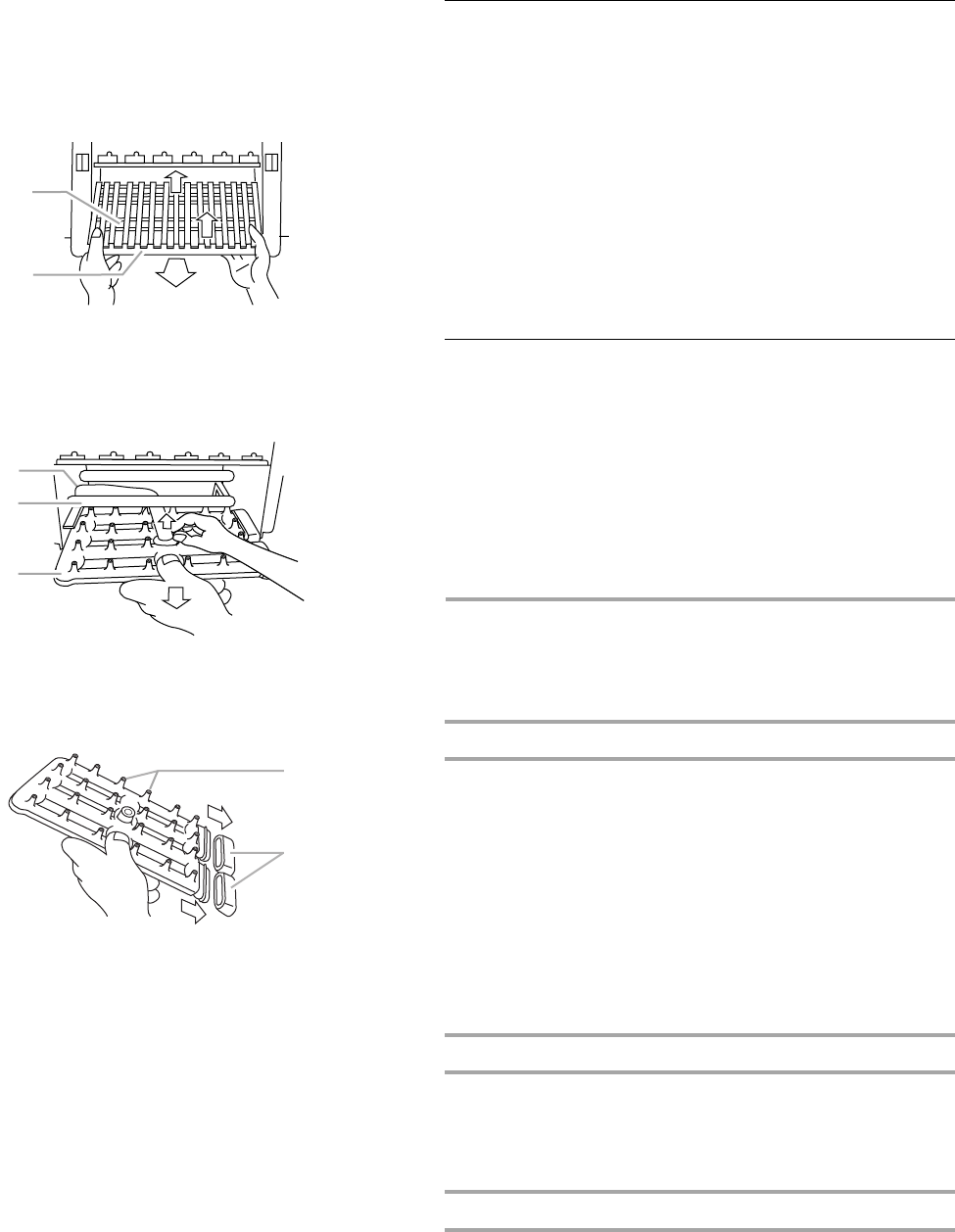
8
3. Remove the slope by bending it in the center and releasing it
from the shafts.
4. Remove the water tank, and drain the water.
5. Remove the separators by lifting each separator up and
pushing back.
6. Lift off the ice chute from the rear and front frames.
7. Below the ice chute is the spray assembly. Pull the discharge
tube from the spray assembly and pull the assembly toward
you.
8. Remove the two caps from the side of the spray assembly.
9. Wash the interior components with mild soap or detergent
and warm water. Rinse in clean water. Then clean the same
parts with a solution of 1 tbs. (15 mL) of household bleach in
1 gal. (3.8 L) of warm water. Rinse again thoroughly in warm
water. If the nozzles on the spray assembly are clogged,
clean them with a wire brush.
10. Clean the scoop and inside of the ice bin.
11. Replace the caps on the spray assembly and slide it back
into place. Reattach the discharge tube.
12. Slide in the ice chute until it clicks into place.
13. Replace the water tank, separators and slope.
14. Plug in ice maker or reconnect power.
Vacation and Moving Care
To shut down the ice maker:
1. Unplug ice maker or disconnect power.
2. Shut off the water supply and open the drain valve.
3. Remove all ice from storage bin.
4. Remove the water tank and drain the water.
5. After the water has drained from the ice maker, close the
drain valve.
6. Before using again, clean the ice maker and storage bin.
7. Discard the first 3 batches of ice produced.
NOTE: All components of the ice maker are permanently
lubricated at the factory. They should not require any additional
oiling throughout the normal life of the machine.
Winterizing
The ice maker must be shut down if temperatures drop below
45°F (7°C). Additionally, if temperatures drop below 32°F(0°C)
the water must be drained completely from the ice maker and all
water lines to avoid damage.
1. Remove the water tank and drain the water.
2. After the water has drained from the ice maker, close the
drain valve.
3. Before using again, clean the ice maker and storage bin.
4. Discard the first 3 batches of ice produced.
TROUBLESHOOTING
Try the solutions suggested here first in order to avoid the
cost of an unnecessary service call.
Unit does not run
■ Is the control set to ICE? Be sure that the control is set to
ICE.
■ Is the power cord plugged in? Plug into a grounded 3 prong
outlet.
■ Has a household fuse or circuit breaker tripped? Replace
the fuse or reset the circuit.
■ Is the temperature cooler than normal? Ambient
temperature must be above 45°F (7°C). Otherwise, bin
thermostat may sense cold ambient temperature and shut off
even though bin is not full of ice. Also, unit may not restart
once it does shut off.
Unit runs but produces no ice
■ Is the control set to ICE? Be sure that the control is set to
ICE.
■ Is the water supply connected? Make sure the water supply
is properly connected and turned on.
Unit runs but produces very little ice
■ Is the temperature hotter than normal? Ambient
temperatures of more than 100°F (37°C) will normally reduce
ice production.
■ Is the condenser dirty? Dirt or lint may be blocking the
airflow through the condenser. See the “Condenser” section.
A. Frame Pipe
B. Ice Chute
A. Discharge tube
B. Frame pipe
C. Spray assembly
A. Spray Nozzles
B. Caps
A
B
A
C
B
A
B



